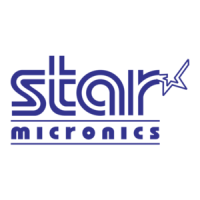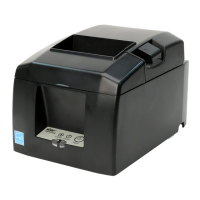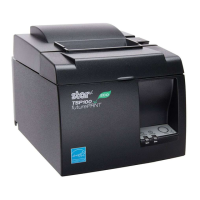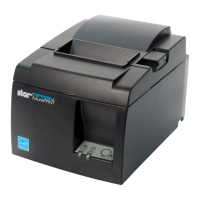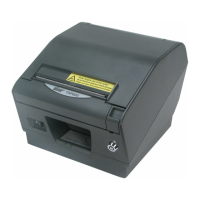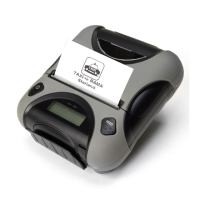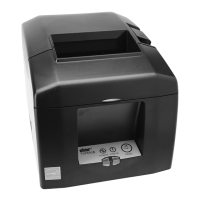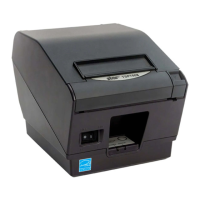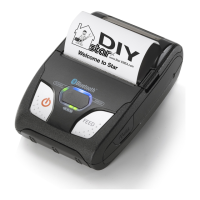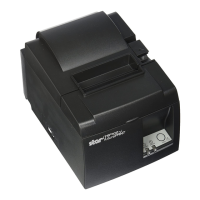Do you have a question about the Star Micronics 8 Series and is the answer not in the manual?
Overview of the printer's physical capabilities, print quality, and versatility in handling various documents and languages.
Explanation of how the computer connects to the printer via cables and the role of bits and bytes in data transfer.
Details on the printer's internal software, including binary, hexadecimal, and ASCII arithmetic for data representation.
Explanation of the American Standard Code for Information Interchange (ASCII) table and its use in character representation and commands.
Introduction to control codes, their function in printer operations, and how they differ from printable characters.
Explanation of escape sequences as commands used for printer operations like setting margins and fonts.
Discussion of the printer's ability to emulate other printers (HP LaserJet II, Epson EX-800, IBM Proprinter, Xerox Diablo 630).
Details on front panel parameters, settings, and four versions of parameters affecting printer operation.
Explanation of the INTERFACE parameter, which defines the connection type between the computer and the printer (Serial or Parallel).
Details on controlling the printer's overall functions, including interface and command parameters.
Methods for controlling page formatting, including paper feed, layout, margins, and print position.
Explanation of the LAYOUT parameter, which controls page orientation, margins, and character spacing on the page.
Definitions of key terms related to fonts, such as typeface, weight, width, style, and stroke weight.
Information on how the printer stores fonts, categorizing them into internal, cartridge, and downloadable types.
Details on using cartridge and downloadable fonts, comparing their advantages and costs.
Explanation of symbol sets and their role in character representation for different languages and specific needs.
Instructions on selecting and managing fonts, including downloading, using cartridge fonts, and setting attributes.
Information about optional fonts available through cartridges or disks, and how to use them.
Overview of HP LaserJet II emulation commands, their structure, and how they provide detailed control over printer functions.
Techniques for combining escape sequences to save keystrokes and simplify command entry.
Commands for controlling printer operations, including self-tests and basic printer status checks.
Detailed explanation of commands for precise horizontal and vertical movement of the print position using various units.
Instructions on how to use raster and pattern graphics, including defining dimensions and printing patterns.
Introduction to EX-800 emulation commands, focusing on their structure and toggle-switch operation for features.
Commands for printer control in EX-800 mode, including online/offline status, reset, and bell functions.
Commands for page formatting in EX-800 mode, including page length, margins, and text justification.
Methods for moving the print position in EX-800 emulation, including space, backspace, carriage return, and line feeds.
Information on EX-800 emulation graphics, including dot printing, densities, and nine-pin graphics commands.
Overview of IBM Proprinter emulation commands and their use cases, especially for software not supporting laser printers.
Printer control commands in Proprinter emulation, including identical controls with EX-800 and printer status management.
Commands for page formatting in Proprinter mode, such as page length and top/bottom margins.
Print positioning commands in Proprinter emulation, including tab settings and line spacing adjustments.
Font selection and management in Proprinter emulation, covering typeface, style, and symbol sets.
Introduction to Diablo 630 emulation commands, highlighting their differences from laser printers and their focus on daisywheel functions.
Printer control commands in Diablo 630 mode, including feed selection and reset operations.
Page formatting commands for Diablo 630 emulation, such as setting space width and page length.
Commands for moving print position in Diablo 630 mode, including backspace, carriage returns, and reverse printing.
Discussion on Diablo graphics, noting their rudimentary nature and suggesting other emulations for better graphical output.
A comprehensive list of HP LaserJet II emulation commands with their functions and corresponding page numbers for quick reference.
Tables detailing available symbol sets for the Star LaserPrinter 8, including character codes and names for various languages and extensions.
| Print Resolution | 203 dpi |
|---|---|
| Print Width | 72mm |
| Print Technology | Thermal |
| Paper Width | 79.5 mm |
| Interface | USB, Ethernet, Serial, Bluetooth (optional), WLAN (optional) |
| Printing Method | Direct Thermal |
| Paper Handling | Roll paper |
